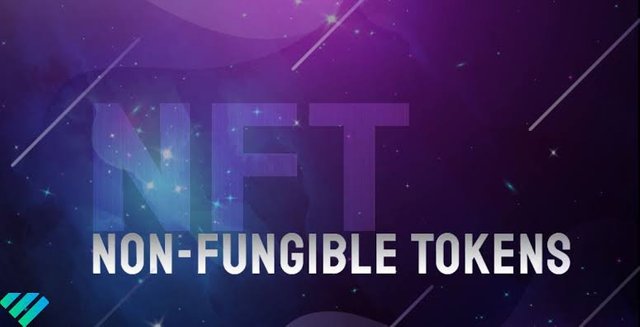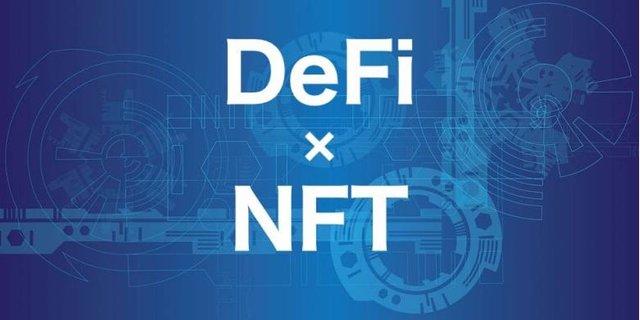Hello all
Yesterday I have shared some more information about nft. But that was incomplete. So , today's is the 2nd part. Hope you all will understand. As nft is going to be the future of crypto.
Decentralized apps (DApps) may use NFTs to issue specific digital objects and crypto-
collectibles. Either a collectible object, an investment product, or anything else can be these
tokens. As many online games have already had their own economies, it makes it possible to
use blockchain to tokenize gaming properties.
In reality, using NFTs could theoretically solve or reduce the popular inflation problem that
many games have. Although virtual worlds are already thriving, the tokenization of real-
world assets is another exciting use of NFTs.
These NFTs can represent fractions of assets in the real world that can be stored and
exchanged on a blockchain as tokens. Digital identity is also a market that can take advantage
of the tools of NFTs. Storing blockchain identity and ownership data will improve the
privacy and integrity of data for many individuals around the world.
NFT Pros and Cons
Pros
• In games, sports, arts, and technology, they could unlock new revenue sources.
• The ERC-721 standard can be a way to tokenize any major asset.
• For the very first time, NFTs could introduce millions of individuals to
cryptocurrencies.
• They can change our ownership behaviours and make it possible to own an asset in
the real world that is thousands of miles away.
Cons
• It can be tricky and time-consuming to create decentralized applications for non-
fungible tokens.
• A lot more simplification is needed to make it easy for individuals who know nothing
about blockchain to use NFTs.
• In the hope of selling it on for a profit, players buy an asset, but if the market crashes,
they will make a nasty loss.
• ERC-721 is still relatively new to the token norm.
• Up to a certain point, fungible tokens are divisible. ERC-721 clearly cannot be broken
and must be purchased or sold in its entirety.
![images 2.jpeg]
( )
)
Source
NFT Applications
Non-fungible tokens are used today in a number of ways, and many NFT examples can be
found, such as:
- Gaming: The ownership of in-game properties has generated value for the players of the
game using Non-Fungible Tokens. By selling your Non-Fungible Tokens, you can sell your
in-game properties in the games for a profit. For the gaming industry, Non-Fungible Tokens
opened a gate of opportunities and has added to its annual revenue and growth. People can
now own, purchase, and sell their game characters by using NFT. - Collectibles: One of the most common examples of NFTs is the use of these tokens to
keep digital assets in your name. You can create an NFT for any digital asset to make it
unique, and as your virtual asset. NFT provides unquestionable possession of all in-game
properties and virtual products in plain terms. - Licensing: Using it for software licensing is another perfect example of the productive use
of NFT. It can minimize piracy by creating NFT-based licenses and encourage individuals to
sell their licenses for even profit on the open market. Users may also skip annual
subscriptions, use software against the purchased license, and sell it to someone else after
using it.
NFT Limitations
Non-fungible tokens however find some of the limitations which can be listed as below:
- Legal Concerns: Legal frameworks differ depending on the country, so it is important to
create a global norm to tokenize art to take local legislation into account. - Public resistance to digital art: In spite of their popularity, crypto-collectibles draw only
a tiny audience of crypto-enthusiasts. For art pieces, one of the main components are the
users may either listen to it or look at it privately to enjoy it. - Lack of accessibility for retail users: For retail users, NFTs lack basic functionality as
they are a backend part and do not have a user-friendly interface.
The Future
Mainly, in gaming and crypto collectibles, non-fungible tokens are implemented. Non-
fungible tokens can be used for gaming, potentially allowing them to be ported to new games
or shared with other players. With the future application of copyright and intellectual
property rights, ticketing, and video game sales and trading, however, their potential is much
wider.

Source
Non-fungible tokens, the tokenization of both digital and real-world resources, add potential
to the generation of security tokens. Physical properties like land may be tokenized for fractional or mutual ownership. Certification, such as qualifications, software licencing,
warranties, and even birth and death certificates, could be further use of non-fungible tokens.
As an evolving phenomenon, NFTs have been evaluated as a key building block for a
blockchain-based ticketing framework for events. NFTs may help resolve the current
shortcomings of existing ticketing systems for non-blockchain activities.
These include activities such as vulnerability to fraud, lack of control over secondary market
transactions and ownership confirmation. NFTs have the ability to be a crucial part of not
only the blockchain community, but the broader economy, by representing real assets in the
digital environment.
Thanks for reading my blog.